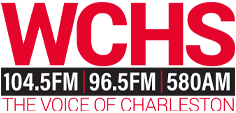CHARLESTON, W.Va. – The West Side Neighborhood Association Brownfields, Abandoned, Dilapidated Buildings Team held its first team meeting Thursday, encouraging attendees to volunteer with the organization to address unsound buildings on Charleston’s West Side.
More than 40 people met at St. Anthony’s Catholic Church to learn about how to identify properties in need.
John Butterworth, West Side Neighborhood Association board member, said a few buildings in the neighborhood are affecting property values of other structures.
“The West Side is such a great neighborhood, but a minority of properties are pulling down all the good efforts that are going on right now for a great revitalization,” Butterworth said. “We really need to turn the page on a lot of these properties, and work on getting them back into productive use.”
The project is being supported by a $10,000 technical assistance grant from the Northern West Virginia Brownfields Assistance Center at West Virginia University. The grant was originally awarded to the Charleston Main Street, who is partnering with the building organization on this project.
Center program manager Luke Elser said the community blight issue is a concern in multiple areas of the state.
“It really takes the efforts of a group of citizens to get out in front of this issue and solve it for their community,” Elser said
Once trained, volunteers will be responsible for identifying properties. The training session Thursday informed attendees of the signs they need to be aware of when surveying buildings, including broken windows and severe damage.
Elser said after analysis of the building is complete, the association will approach the buildings owners about ways to improve the structure.
“Not as enforcement agencies,” Elser said. “It’s going to be regular volunteers – neighbors, friends, family – reaching out to say, ‘Do you own this property? What do you want to do with it, and how can we help?'”
Elser said it will take two to four months to complete the survey and analyze the buildings in question.
Butterworth, who also works as a neighborhood planner for Charleston’s Planning Department, said the first part of the project will focus on buildings between Iowa and Hunt Avenue, though this could change depending on how many people assist with surveying.
“I think by fall time, we should really have something to show to the general public, and be able to say, ‘Here’s our vision for how we move forward,” Butterworth said.
The organization will hold meetings after surveys are complete to discuss with the public about ways to fully utilize the space.


